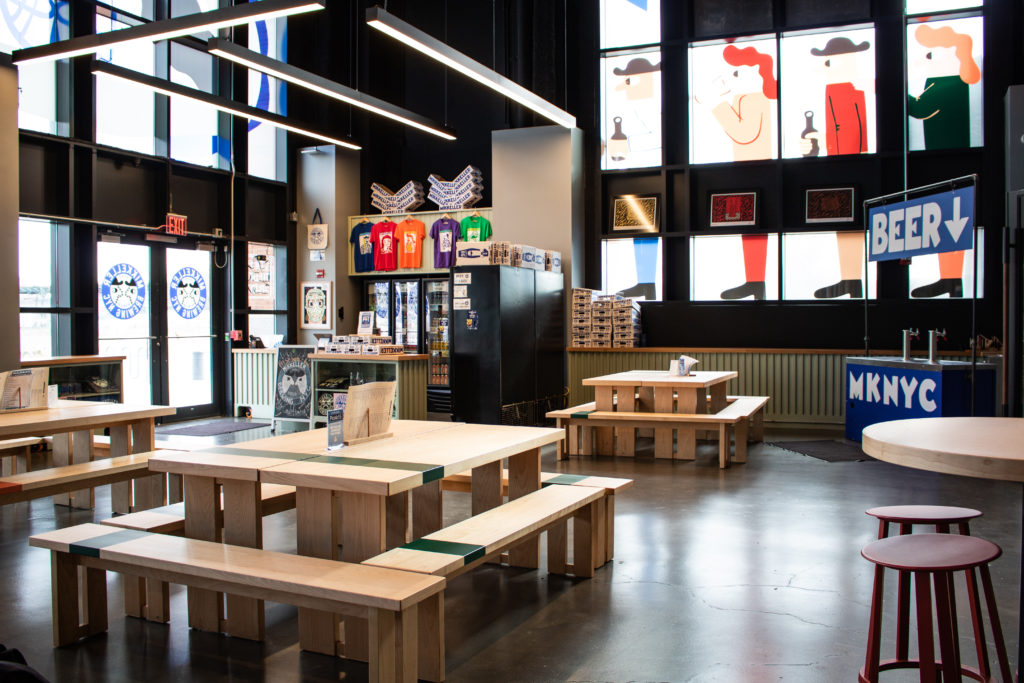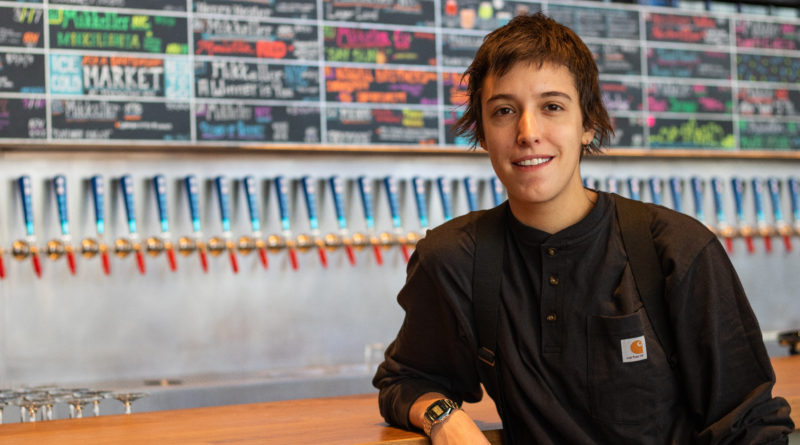Mikkeller hopes to be craft beer hub in Queens
By Benjamin Fang
Copenhagen home brewer and high school teacher Mikkel Borg Bjergsø founded Mikkeller Brewing in 2006 by experimenting with hops, malt and yeast in his kitchen.
He received renown for creating a recipe called Beer Geek Breakfast, which is a stout with coffee and oats. After he started gypsy brewing, he joined journalist Kristian Klarup Keller to create Mikkeller.
Today, the brewing company exports its products to 40 different countries across the world, including a San Diego site several years ago.
But Bjergsø wanted to have a presence on the east coast as well. That’s why he decided to team up with his friend Bruce Wilpon, a partner with Sterling Equities, to bring Mikkeller to Citi Field.
In March 2017, they brought on Jim Raras as executive vice president and Hannah Goldman as director of operations. Together, they set out to transform an unoccupied event space next to right field into a destination for craft beer.
Goldman said the space they occupy now has been empty since Citi Field was completed in 2009. It was meant to be an event space, but was never used because, as Goldman put it, people wanted to see the field.
“It was essentially, when I first walked in here, a glorified storage closet,” she said. “It had big bags of ketchup from God knows when.”
But Goldman thought the space, with 30-foot-high ceilings, was great, especially for big, tall fermenter tanks.
“Beer is not an immaterial business,” she said. “There’s a lot of volume and weight input from grain and water, hops and all that. So we started here.”
Immediately, the Mikkeller NYC team ran into multifaceted challenges. Because the stadium was built on parkland, the brewery had to use union labor.
Goldman said because of the specific nature of brewing requirements, many of the workers didn’t have the right training. They had to bring in the “right people” to educate the workers on how to run the production facility.
Secondly, the entire stadium is built on giant pylons, not on solid ground. That meant they couldn’t drill into the floors, which was important because they needed to put all the yeast, hops and other sweet, sugary material down the drain “on a regular basis.”
“We needed very long sloped trench drains,” she said. “In order to do that, we had to raise up the floor completely.”
Another challenge was that the space was essentially one giant 10,000-square-foot room with high ceilings. They had to install all of their utilities –– all of the guts of the infrastructure –– before pouring the concrete.
Top it all off with a tight deadline – they wanted to be ready for Opening Day for the Mets – and everything had to be done with little room for error.
Goldman added that it takes 21 days for concrete to cure. They had to wait for that to be done before bringing in the fermenter tanks.
“You have to sequence everything,” she said. “The floor in general was like, get all your ducks in a row right now or we can’t do this.”
The space is a mix of industrial and commercial uses. When you walk in, the taproom is made up of tables with bench seating. Goldman said it resembles a mess hall, great for game days when the brewery fills up.

Behind it is a bar area that’s more intimate. Patrons can swing by to hang out, have a drink and talk to the local bartender.
But what makes the space stand out is the production facility, which is roped off on the right side of the room. The fermenter tanks are stacked on top of each other, which was an intentional choice.
“We did what New York City does best: go up,” Goldman said. “We had high ceilings, there’s no reason not to. It’s taking something that’s the bane of your existence and making a positive spin on it.”
The space also gave Mikkeller NYC chance to have more fermenters with smaller capacity. That allows them to brew lots of different beers, but not have to make them in large quantities. It allows them to follow their founder’s love for experimentation with low risk.
According to Goldman, New York City is still relatively new for the craft beer industry. She said she wants Mikkeller to become what Brooklyn Brewery was to Williamsburg: a trailblazer, pioneers and, ultimately, a community hub.
“We look across the street at these chop shops, and we’re not disheartened by the fact that there’s nobody here,” she said. “We feel as though we’re on the front end of something really big.”
Though Willets Point is mostly deserted, and needs a lot of environmental remediation before any buildings can be erected, Goldman is hopeful that in five years they will have company across the street.
“We’ll be that local hub and that community gathering space,” she said. “We want to be that anchor.”
In the meantime, Mikkeller is starting to become an attraction for Mets fans and craft beer enthusiasts alike. In fact, Goldman sees their location at a baseball stadium as an opportunity to “respectfully educate” the general populace about the growing trend of craft beers.
“You take their hand and you’re like, ‘Let me show you what a really great light pilsner lager from a craft brewery tastes like,’” she said. “That’s where we have such an amazing opportunity. We get access to customers that other breweries would never have access to because of the stadium.”
In the next several years, while watching how Willets Point evolves, Mikkeller hopes to be a “destination brewery,” Goldman said. She envisions visitors making their way to Queens for a drink, then hopping over to Flushing for some delicious Schezuan food.
“We want to be considered the best in Queens, and we want people to come here specifically for us,” she said.
And because the craft brewing industry in general is “pretty white,” Goldman said, she wants it to become more accessible to beer drinkers of every culture.
“We aim to expand what people’s idea of beer is,” she said. “There are so many different kinds of beer, and it’s for everybody.”




